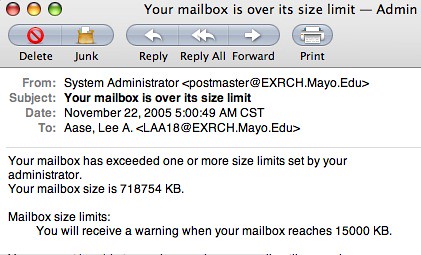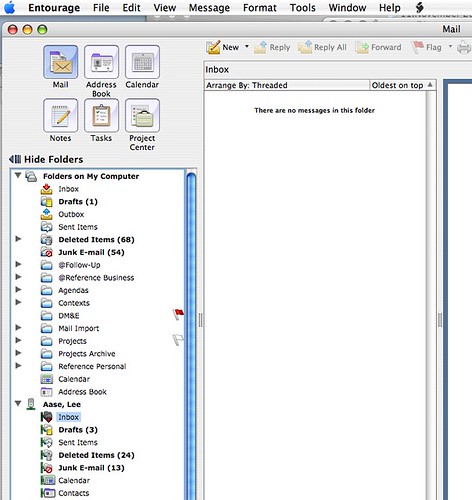In a previous post I mentioned how David Allen touts the Two-Minute rule as one GTD change you can make that will put you ahead of 90 percent of homo sapiens, and how it can make your team more productive even if you are the only one using it.
Some GTD purists would say you aren’t really doing GTD if your weekly review isn’t up to snuff. I agree to a point. But I had an experience this week that reminded me of how even imperfect implementation of GTD, or only doing parts of it, can still put you miles ahead in the race to excellence.
One thing I have done really well in these last 51 weeks is sort through my email to get my inbox to empty, as I described here. My weekly review, on the other hand, has frequently been lacking. And sometimes I get messages moved to my @Computer, @Calls or @On-Line context folders (which means I have decided the Next Action that I want to do as soon as possible), but I don’t always act on it as quickly as I would like. The message can languish there for weeks (or even sometimes months), as other, more recent messages are piled on top.
That’s certainly not ideal, but it’s still an improvement over 11,000 messages in the inbox, for two reasons:
First, sometimes the person on the other end of that message will call me or otherwise get back in touch. By having the message in an appropriate context file, I’m able to find it more quickly to be able to respond.
Second, I do sometimes work my way through those context folders and make it all the way to the bottom. I did it just this week with someone with whom I had decided to do an informational interview about positions open in our department. When I had put the message in @Calls several months ago, the positions weren’t open yet. Now they are. So in a sense it was mediocre, in that I didn’t get in touch as quickly as I would have hoped, but at least the marker for the open loop wasn’t completely buried. Better to be buried under 20 calls than beneath 5,000 undifferentiated messages.
So, we’re doing the information interview on Friday. In my pre-GTD days, that message could easily have been lost forever.
I am convinced that doing a mediocre job of using GTD still has made me immeasurably better at handling the onslaught of email and other inputs coming into my life. And just the taste of the empty inbox spurs me on to do better in the Review and Horizons of Focus parts of GTD. But even having just the Collect, Process and Organize phases working pretty well has made a huge difference for me.
 Technorati: GTD, David Allen, email
Technorati: GTD, David Allen, email


